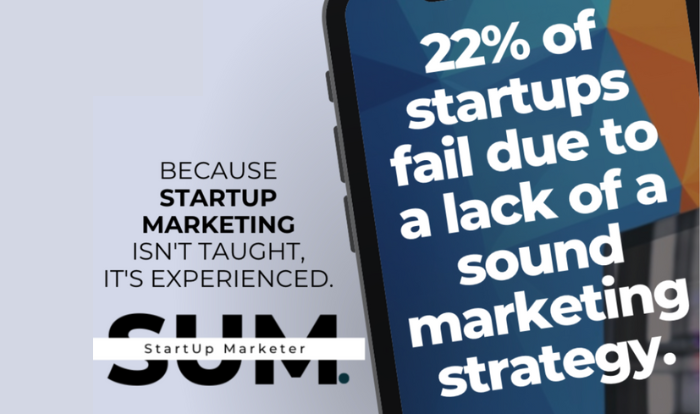Table of Contents
ToggleIn startup marketing, every move counts. That’s why the ability to connect with the right audience can make or break a campaign. In this article, we dive into the crucial art of segmentation strategies, unraveling the tactics that transform generic campaigns into targeted triumphs. Marketers use audience segmentation to identify and then categorize subgroups within their target audience. This way, you can provide each unique group with more relevant messaging.
In startup marketing, sending generic campaigns is akin to shooting in the dark—a hit or miss with high stakes. The startup ecosystem thrives on innovation, adaptability, and a keen audience understanding. Enter segmentation strategies, the beacon guiding you to the heart of your target market.
Why Is Segmentation Important? Generic campaigns, or sending the same, broad email to an entire audience, may seem efficient. But, they often fail to resonate with the diverse audience that your startup seeks to s engage with. Segmentation is the antidote to generalization, offering precision, relevance, and, most importantly, results.
“Segmented email campaigns can boost open rates by 26% and click-through rates by 760%. – Campaign Monitor “
Consider a startup in the SaaS industry. A generic email about your product features may resonate differently with some recipients. With segmentation, you can tailor your message based on factors like industry, job role, or company size. Imagine the impact of a personalized email addressing specific pain points or showcasing how your solution aligns with their unique needs.
Understanding Segmentation Strategies
The Enemy Within How Generic Campaigns Hinder Growth
Generic campaigns, particularly those that don’t address your audience’s needs directly, are a failure point for many startups. This one-size-fits all approach lends itself to self-promotion while ignoring what matters to your buyer, doing more harm than good in the long run. While we understand marketers select a generic approach for the sake of speed to market, cutting corners and sacrificing personalization is usually a corner that can come back to bite you.
Personalizing Content: A Beacon of Hope
Personalization is your secret weapon. It’s more than just emailing someone by their first name. It’s about delivering content that speaks directly to their needs, challenges, and aspirations. Personalized content resonates, captures attention, and builds a connection that generic campaigns can never achieve.
For example, say you’re working for a SaaS startup. You identify that some of your audience comprises small businesses looking for cost-effective solutions. Another segment includes enterprise-level companies seeking robust features. Crafting personalized content allows you to highlight the affordability for small businesses and emphasize the scalability for enterprises, resulting in content that is more likely to capture the attention and garner engagement from each audience.
Real-Life Examples of Successful Personalization in Startup Marketing
Look no further than e-commerce giants like Amazon. Their recommendation engine, powered by segmentation and personalization algorithms, suggests products based on browsing history and preferences. The result? A personalized shopping experience that keeps customers engaged and coming back for more.
Tactical Implementation of Segmentation
Identifying Key Segments in the Startup Ecosystem
Startup marketing is a diverse playground, and understanding your audience segments is the first step toward effective segmentation.
- Demographic and Psychographic Insights: Dive deep into your audience demographics. What industries are they in? What are their pain points? Understanding psychographics—values, interests, and behaviors—adds another layer of insight.
- Utilizing Behavioral Data for Precision: Use data to track how users interact with your website, emails, or social media. Uncover patterns and preferences that inform your segmentation strategy.
Building Target Personas
Crafting detailed personas is your roadmap to personalized campaigns.
- Crafting Detailed Profiles: Personas go beyond demographics; they’re detailed characterizations of your ideal customers. What are their goals? What challenges do they face? The more granular, the better.
- Addressing Pain Points Through Persona-Specific Campaigns: Tailor your campaigns to manage each persona’s pain points. Speak directly to their challenges and position your product or service as the solution they’ve been searching for.
Tools and Technologies for Effective Segmentation
Need help navigating the segmentation landscape? Leverage tools and technologies to streamline the process.
- Overview of Marketing Automation Platforms: Platforms like HubSpot, Mailchimp, or Marketo offer robust automation features, allowing you to segment your audience based on various criteria and automate personalized campaigns.
- How Analytics Drive Smart Segmentation Decisions: Analytics aren’t just for measuring success; they’re your guiding light. Track your segmented campaigns’ performance and use these insights to refine and optimize your strategy.
Overcoming Challenges and Maximizing Engagement
Personalization comes with its own set of challenges. Let’s address them head-on.
- The Balancing Act: Personalization vs. Scale: Striking the right balance between personalization and reaching a broader audience is crucial. Utilize automation, data, and ruthless prioritization to focus on the segments most likely to drive results. Put your time and resources behind those segments first.
- Data Privacy Concerns and Compliance: With significant data comes great responsibility. Ensure your segmentation practices comply with privacy regulations and prioritize ethical data usage.
- Measuring Success: Key Metrics for Segmentation Strategies: Metrics matter. Keep a close eye on conversion rates, engagement metrics, and other key performance indicators to gauge your segmentation efforts’ success.
- Test, Test, & Test Some More: Unsure which segments to focus on? Implement testing. Gauge metrics such as click-through and conversion rates to understand which audiences will most likely engage with your brand and convert throughout the funnel. This will give you data to back your decision on where to focus and help you save time on tiny, unengaged audiences.
- Don’t over-segment for the sake of segmentation: There is a limit. When you segment your audiences without explicitly changing the messaging between them, you are over-segmenting and likely wasting money and resources. Segmentation should be intentional and provide a unique experience. If you’ve overdone it, look where you might combine efforts to be more efficient.
Example: Don’t segment by geography if the message to the audience is the same regardless of their location. This level of segmentation can hinder platform learning and cause spending inefficiencies, particularly in paid media. Only segment audiences if you have a unique message to share or if you have varying goals for each segment.
The Journey Ahead: Continuous Learning and Adaptability in Segmentation
How do you stay ahead of the curve in the startup marketing landscape?
- Continuous Learning: It’s not a one-and-done deal. Stay informed about industry trends, emerging technologies, and evolving customer behaviors. Attend webinars, read relevant articles, and engage in discussions within the startup marketing community.
- Adaptability: Flexibility is your ally. The startup ecosystem is dynamic, and what works today might need adjustment tomorrow. Be ready to adapt your segmentation strategies based on real-time feedback and market shifts.
Remember that success in startup marketing is not a destination but a journey. The power to target the right audience lies in your hands, fueled by data-driven insights, a commitment to ethical practices, and a mindset of continuous learning.
Compelling subject lines act as beacons, cutting through the clutter of mundane emails with a magnetic allure. It's not just Read more
Mastering the art of demand generation is not just a choice, but a necessity for carving your startup’s path to Read more
Turn your startup’s marketing organization into an impact driver with these three elements detailed on The StartUp Marketer blog.
Learn how startup marketers can perfect the art and science of prioritization in this StartUp Marketer blog post.





